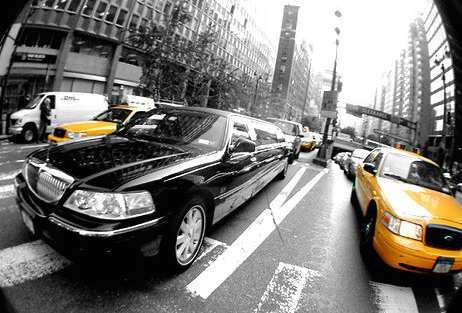It’s Not Too Late to Fix Cuomo’s Awful Uber Bill

A bill that Governor Cuomo wants to enact in a special session presents a perfect opportunity to refine how New York regulates for-hire vehicles, but leaked details of the legislation suggest the administration is on the verge of letting it go to waste.
The bill aims to set up ground rules for companies like Uber and Lyft to operate in upstate cities. It’s a rare moment where the state has a lot of leverage to extract concessions, like making ride-hail companies release their trip data. What’s emerged so far, however, suggests the bill will instead be a hodgepodge of provisions to please and appease various interest groups in the for-hire vehicle industry.
While it’s late in the game, the bill appears to be in flux and there’s still time to fix it. Here are three ways in which the final product could and should serve the public interest.
Make Uber/Lyft trip data publicly accessible
Politico’s Dana Rubinstein reports that a provision in the bill will shield Uber and Lyft from the state’s freedom of information law. This would be a giant step backward and set a terrible precedent.
Origin, destination, and route data for Uber/Lyft trips is essential to smart regulation of the for-hire industry. With this information, cities can gain an understanding of:
- How people use for-hire services and how changes in the for-hire industry affect the broader transportation network (e.g., is Uber increasing congestion?)
- How to use pricing mechanisms to prevent Uber/taxi gridlock (especially useful for congested downtowns)
- How to adjust bus routes to better align with travel demand
- Where transit agencies might want to subsidize for-hire service to supplement fixed-route service
Transportation analyst Bruce Schaller told Streetsblog last year that without access to trip data, crafting good rules for the for-hire industry is like “throwing darts in the dark.”
And that’s how it will stay if Uber and Lyft get to keep their data out of public view forever.
Level the playing field between conventional taxis and Uber/Lyft
The for-hire industry will work better for customers if competing companies are regulated fairly, without giving some interests a leg up on others. In New York City, for instance, the TLC has imposed uniform licensing requirements for both yellow taxi drivers and Uber drivers.
The taxes and fees assessed on different types of for-hire vehicles are not level, however. In New York City, yellow taxis are subject to a 50-cent fee per trip, which is earmarked for the MTA. Uber, Lyft, and all black cars, meanwhile, do not pay the MTA surcharge, but are subject to city and state sales taxes that do not apply to yellow cabs.
A uniform system of taxes and fees should apply to companies operating in the same market, but according to the latest information available, Cuomo’s bill does not attempt this. Instead, black cars in NYC, including Uber and Lyft, would continue to be exempt from the MTA fee and subject to the sales tax.
Fix a broken MTA funding formula
The MTA fee on yellow taxi trips raises more than $80 million per year. But as Uber and Lyft take market share away from yellow cabs in NYC, budget analysts warn that they are destabilizing this source of revenue for the transit system.
The fee has also been set at a flat $0.50 since it was enacted in 2009, and inflation is eating away at its value.
There are different options for restructuring the MTA fee, including turning it into a variable fee that rises in congested locations. But an easier fix that could be enacted right now would be to simply raise the MTA fee to $1 per trip and have it apply uniformly to all for-hire trips in New York City.





